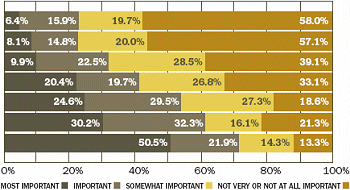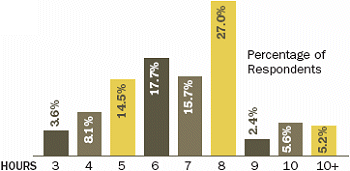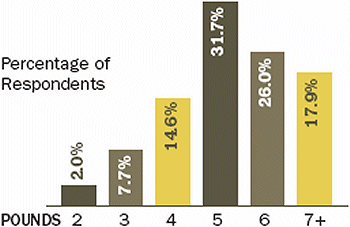Extracurricular :: For technologists who do their homework
The purchase of a mobile student-computing device requires districtsto consider several factors, from warranty options to battery life.
HIGHLIGHTS
- HALF OF RESPONDENTS SAY TOTAL COST OF OWNERSHIP IS THEIR MOST IMPORTANT CONSIDERATION
- IDEAL BATTERY LIFE IS 8 HOURS, ENSURING THAT THE DEVICE WILL LAST THE SCHOOL DAY
- MAJORITY OF RESPONDENTS SAY 5 POUNDS IS TOO HEAVY FOR A MOBILE COMPUTING DEVICE
How important is each of the following considerations when purchasing a mobilestudent-computing device?
Power consumption
Vendor reputation for innovation
Service options including self-service
Quality of vendor sales and support staff
Warranty
Initial Purchase Price
Total cost of ownership

What is the ideal battery life fora mobile student-computingdevice?

At what weight is a computingdevice too heavy for students?

(Percentages may not total 100 due to rounding.)
—Data courtesy of Jeanne Hayes (The Hayes Connection)and Tom Greaves (The Greaves Group).
Read about the full report, "America's Digital Schools 2007: A Five-Year Forecast,"here.